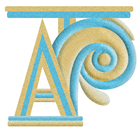The Digitisation of the Artefacts of the Enkomi tombs
The Digitisation of the Artefacts of the Enkomi tombs (British Excavations) in the Cyprus Museum
Dr. Despo Pilides, Curator of Αntiquities, Department of Antiquities, Cyprus
The Project
The proposal was submitted and approved by the Promotion Foundation for Research in 2008. Its duration of 24 months (from January 2009 to December 2010) involved archival research concerning the excavations of one hundred tombs of the Late Bronze Age, of considerable wealth, excavated in 1896 and published in 1900. Two thirds of the objects were transferred to the British Museum as per the terms of the Antiquities Law at the time which allowed the excavator, the owner of the land and the Government a share of one third each of the total number of objects found. The excavators usually bought the land and were, therefore, granted two thirds of the finds. The Cyprus Museum share was kept in the old premises at Victoria Street. It was then transferred to the new Cyprus Museum, around 1909 and was given new accessory numbers.
The programme is a collaborative effort between the Department of Antiquities, the Open University of Cyprus and the British Museum. Its implementation will ensure the preservation of the collection, it will provide accessibility to objects belonging to the so-called “old collection” in the Cyprus Museum store rooms and consequently facilitate research. Furthermore, it will promote the use and application of statistical and analytical techniques for archaeological data and will give the opportunity to educational institutions to use it as a teaching aid.
Introduction
The significance of the site of Enkomi in Late Bronze Age Cyprus is well known. Extensive research has been carried out over the years by an international array of archaeologists. Considerable publication has shed light on its central role within the socio-economic and political context of the island and the eastern Mediterranean in general during this period. Nevertheless, despite the importance of the site, and the extensive research on its material, the tombs excavated by the British at the end of the 19th century were not given adequate attention until recently.
The fact that we are dealing with an excavation that took place in 1896, with a rather short duration and limited published information highlights the necessity of having a methodology specially designed for this project. Available information sources include:
1. The 1900 British Museum excavation report by Murray, Smith and Walters, its main part consisting of a catalogue and brief discussion of the artefacts that were transported to London.
2. The diaries of the excavators, published by Veronica Tatton-Brown in Cahier 33-2003.
3. The Cyprus Museum index cards of the “old collection”.
4. The 1899 catalogue of the Cyprus Museum by J. L. Myres and M. Ohnefalsch Richter, in which some of the objects stored in the Cyprus Museum are mentioned.
5. The counterfoil book with a catalogue of the objects and the designation of which tombs were ceded to the Cyprus Museum, kept in the Cyprus Museum.
It was clear from the very beginning, that the list of artefacts in Myres’ catalogue was far from complete and the 1900 report lacked adequate descriptions of the finds and their contexts, while the diaries, which described all the tombs, were far from accurate. The methods of excavations at the time did not provide for stratigraphic observations or for anthropological studies of the skeletal material and, the only safe conclusion that could be drawn was the astonishing wealth of these tombs. Provenance did not always appear on the index cards and site identification included various names such as Enkomi or Salamis- the original citation was kept, although it is more than clear that both referred to the same site. Sometimes the same tomb number was assigned to both Salamis and Enkomi and tomb numbers were often omitted or were marked with a question mark. The only other documentation available for tomb provenance, were the pencil marks made on the surface of the pottery, possibly as it was coming out of its original context. With these tools in hand, the objects were located in the store rooms, they were recorded, cleaned and treated by the conservators when necessary and photographs and drawings were then made.
The following tombs were either ceded to the Cyprus Museum on completion of the division or individual objects, usually of stone or duplicates were left behind: T.4, T.5 (no artefacts located), T.6, T.7, T.8, T.14, T.18 (no artefacts located), T.20, T.21, T.23 (BM and CM), T.24 (BM and CM, 1 stone object only), T.25, T.26 (BM and CM, one stone object only), T.27, T.28,T.30(no artefacts found), T.31, T.37 (BM and CM), T.40 (BM and CM), T.41 (BM and CM), T.42, T.43, T.44, T.49, T.52, T.54, T.55, T.59, T.68, T.69 (only one object) T.71, T.76, T.78, T.80, T.82, T.87,T.90,T.94,T.96,T.98 and T.99.
